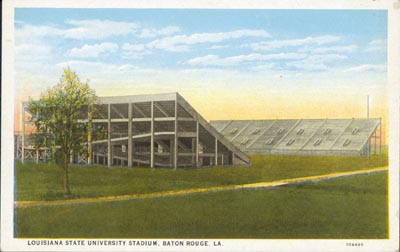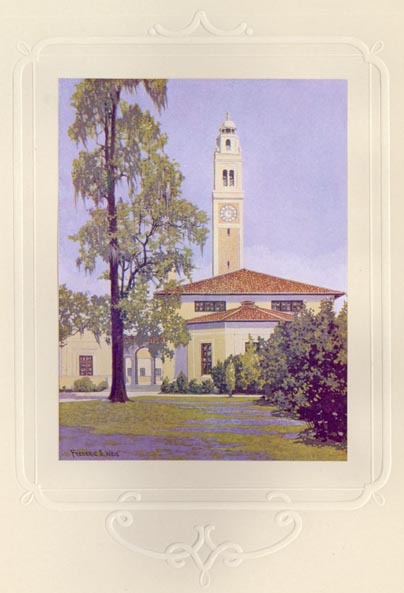
Case 11: LSU in Baton Rouge
Interpretive Text:
After the building that housed the Louisiana State Seminary of Learning at Pineville burned in 1869, Baton Rouge became the institution's new home. By 1870 the legislature had changed the name of the school to the Louisiana State University. In 1877 it became the Louisiana State University and Agricultural and Mechanical College. David French Boyd, a member of the first faculty in 1860 and a former Confederate officer, was the first president of LSU in Baton Rouge. He served from 1870 to 1880 and was succeeded by his brother, Thomas Duckett Boyd, who served from 1896 to 1927. The Boyds' leadership helped LSU survive and grow. From 1924 through 1927 Thomas Boyd oversaw the planning and building of the new campus where LSU resides today.
The flagship institution of the state, LSU is designated by the Carnegie Foundation as a Research University I, placing it in the top 2% of the nation's colleges and universities. The distinction is shared by only 45 public and 25 private institutions. It is one of only 25 universities nationwide to hold both land-grant and sea-grant status. Faculty research is supported by its nationally known library, the largest in the state, and by a supercomputer that places LSU among the top 20 universities in the country in terms of computer capacity.
Throughout its 139-year history, LSU has served the people of Louisiana, the region, the nation, and the world through extensive, multipurpose programs encompassing instruction, research, and public service. Today LSU is a cosmopolitan community of more than 35,000 faculty, staff, and students from every state and more than 100 countries. LSU annually injects more than a half-billion dollars into the Baton Rouge economy.
LSU's athletic program has traditionally been strong in all its varsity sports. Of LSU's 20 athletic teams, 12 ranked in the nation's top 25 during the 1997-98 athletic year; 5 finished the season in the nation's top 5 for their respective sports. LSU's Athletic Department generated over $21 million in revenue in 1997-98.
LSU faculty members publish their research and writing with the LSU Press and with numerous other presses. Not all their writings are in the serious, scholarly vein. Faculty member M. K. Shuman set his entertaining and popular mystery novel The Meriwether Murder on the LSU campus.
The LSU Libraries holds over 2.8 million volumes. Hill Memorial Library, which houses Special Collections, was originally constructed in 1925 as the main library for the campus. It was renovated from 1983 to 1985 to house Special Collections that comprise more than 200,000 volumes, over 10 million manuscript items, and hundreds of thousands of photographic images. These holdings are the most comprehensive collection in existence relating to Louisiana, past and present.
Items Displayed:
Items listed below were part of the exhibition but some are not pictured on this page.
LSU Press. Publicity Poster. "The All-Girl Football Team," 1986. University Archives. LSU Press.
Lewis Nordan. The All-Girl Football Team. Vintage Contemporaries Ed., 1989. University Archives.
Programs: 1986, LSU Baseball; 1992-1993 Lady Tigers Basketball. University Archives.
Original building brick, ca. 1860s. Louisiana State Seminary of Learning, Pineville, LA. University Archives.



Prather Warren. Photograph "Aerial View of LSU Campus, 1997." Courtesy of Jim Zietz.
G. D. Bently, 1904 LSU Ring. LLMVC, Nita Sims Breazeale Collection.
LSU Commencement Hop Dance Card, 1872. University Archives.
Thomas D. Boyd's Tiger statue. c. 1920? University Archives, Presidents' Records.
M. K. Shuman. Meriwether Murder. Courtesy of Fran Huber.
LSU Pom-pom. University Archives.
